
Mushroom growing is fun and satisfying, and can be done almost anywhere.
Growing mushrooms from plugs on logs tends to take more time than growing them from sawdust, but has the added benefit of growing vertically to save space.
What are mushroom plugs?
Mushroom plugs are small wooden dowels that have been inoculated with mushroom spawn. They’re inserted into logs with the intention of growing mushrooms at home.
Where do you get mushroom plugs?
If you’re lucky enough to have a mushroom foraging or growing community in your area, make connections with people in that group.
People who are already successfully growing mushrooms in your region will be a wealth of knowledge about how to grow your own. They’ll also know exactly where to get high quality mushroom plugs, or they might even have some that they can share!
If you don’t have mushroom lovers in your area, you can always buy plugs online at retailers like Amazon.
I used this pack of 100 Oyster Mushroom Mycelium Plug Spawn for this project, but you can also buy Shiitake Plug Spawn and many other varieties below.
When should I put mushroom plugs in?
Early spring is generally the best time to start this project. This is when the trees have their highest water content and are most likely to be receptive to plugs.
How to Grow Mushrooms from Plugs
Step 1: Choose your wood
Look on the package for your particular mushroom plugs to identify what type of wood they require.
Hardwood is almost always best, and many mushroom varieties have very particular needs, so be sure to follow the instructions.
Logs can be taken from standing or newly fallen trees. It’s important to be picky with your wood selection.
The wood should still be full of moisture, and should not have been down so long that other mushroom varieties have had a chance to colonize.
Keep the bark on the wood as well, this will help it to retain moisture.
The log size is entirely up to you, but a good rule of thumb is to cut logs that are large enough that they can hold lots of plugs, but small enough that you can move them and stack them easily.
Step 2: Drill the holes
Using a 5/16 inch drill bit, drill holes all along the logs, approximately four inches apart and two inches in between rows. The measurements need not be exact for this process, but try to make sure they’re evenly spaced around the log.
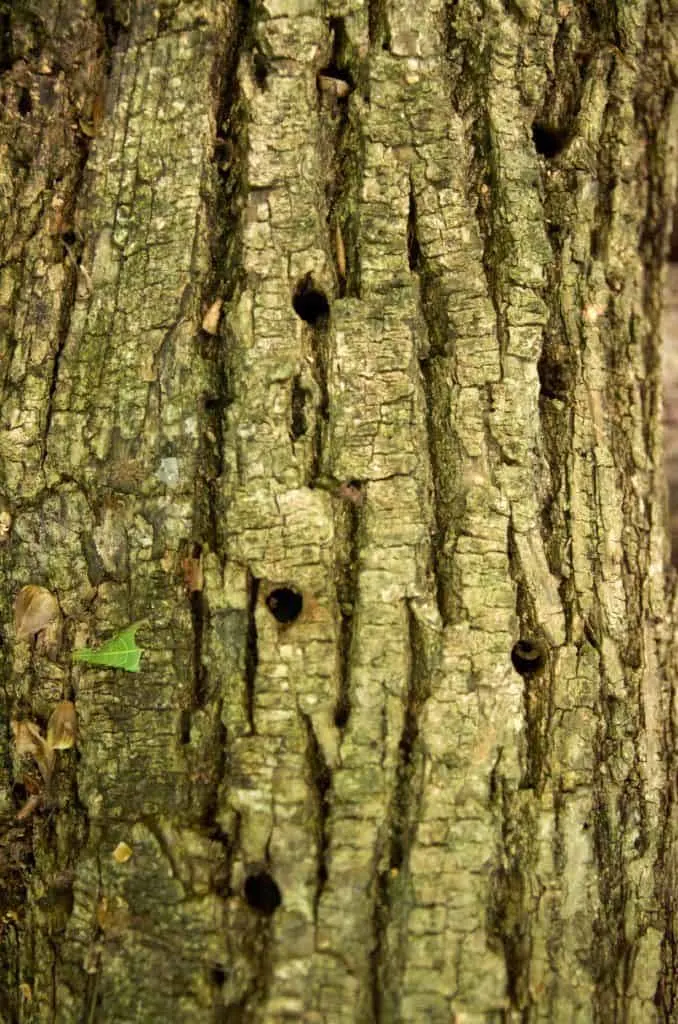
Step 3: Hammer in the plugs
This step is easily the most satisfying, at least up until you actually get mushrooms from your logs!
Place one mushroom plug into each hole in the log and use a hammer or mallet to gently tap it snugly into the hole until it’s flush with the surface of the log.
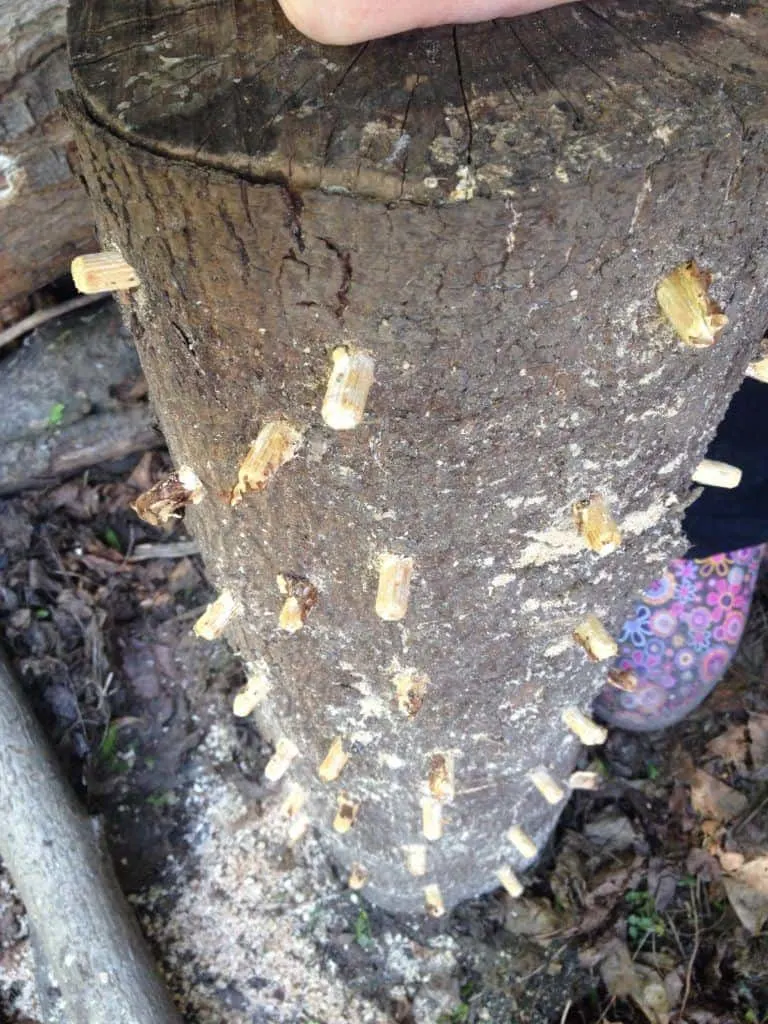
Step 4: Apply Beeswax
Melt a few chunks of pure beeswax to use for sealing the logs. Wax can be really messy and hard to clean, so it would be best to use a container that you can recycle at the end of this project.
It’s best to melt the wax at the site of the logs. Melted beeswax can re-harden in less than a minute away from the flame, so you’ll save yourself a lot of frustration by melting it where your logs are already set.
We used an empty tunafish can balanced on two pieces of wood with a lit votive candle underneath to melt the beeswax. This low-tech solution was perfect because it was easy to manage, and the tuna can could go right in the recycle bin when we were through. Easy process and easy cleanup!
Once your wax is melted, use an old paint brush to apply it over the top of the holes with the plugs in them. You’ll also need to coat the ends of the logs with a nice thick coat of wax.
Waxing the log helps it to retain moisture and keeps the wood from being infiltrated by bugs, bacteria, or competing fungus while the mushroom spawn is growing.
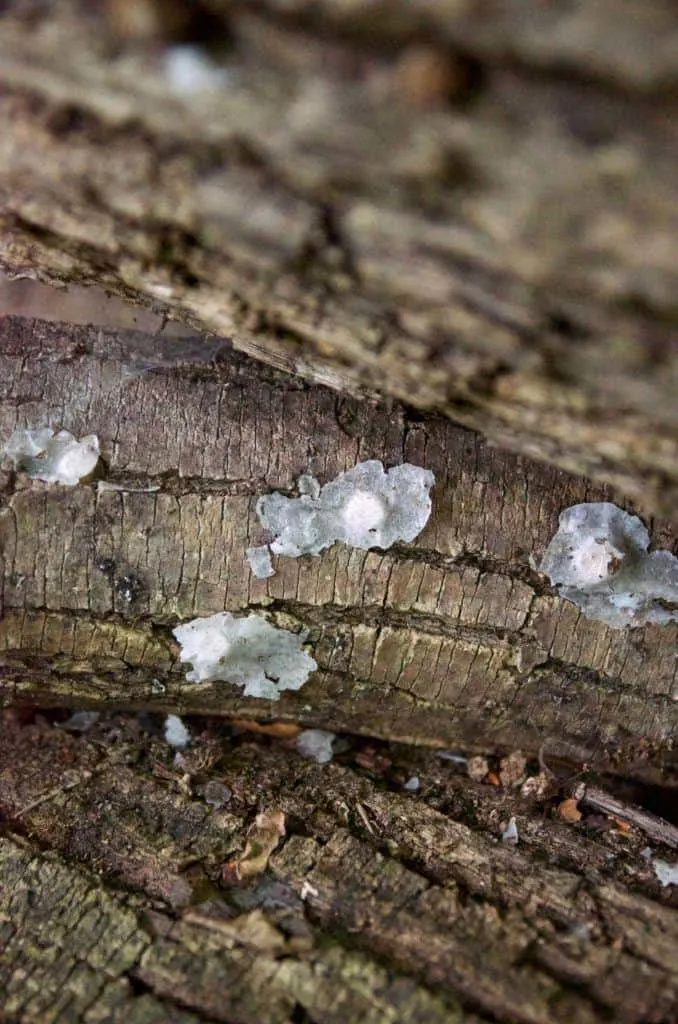
Step 5: Stack the logs
Decide on a good location for your newly inoculated logs. This will depend entirely on the type of mushroom you’re growing. Most mushrooms thrive in shady areas, though some enjoy some dappled sunlight. Check the packaging for your mushroom plugs or research their specific needs.
Your log stack will need to be up off the ground to help protect it from rot and insect infestations. You can do this easily using a pallet or some spare pieces of lumber.
There are two main options for stacking your inoculated logs.
Option one is to lean them up against a horizontal structure like a fallen tree or saw horse. This option is very simple but not the most structurally stable as the logs can slump or fall over time.
The second option is to stack the logs as you would a log cabin, in a square or rectangle, criss crossing each log as you stack them.
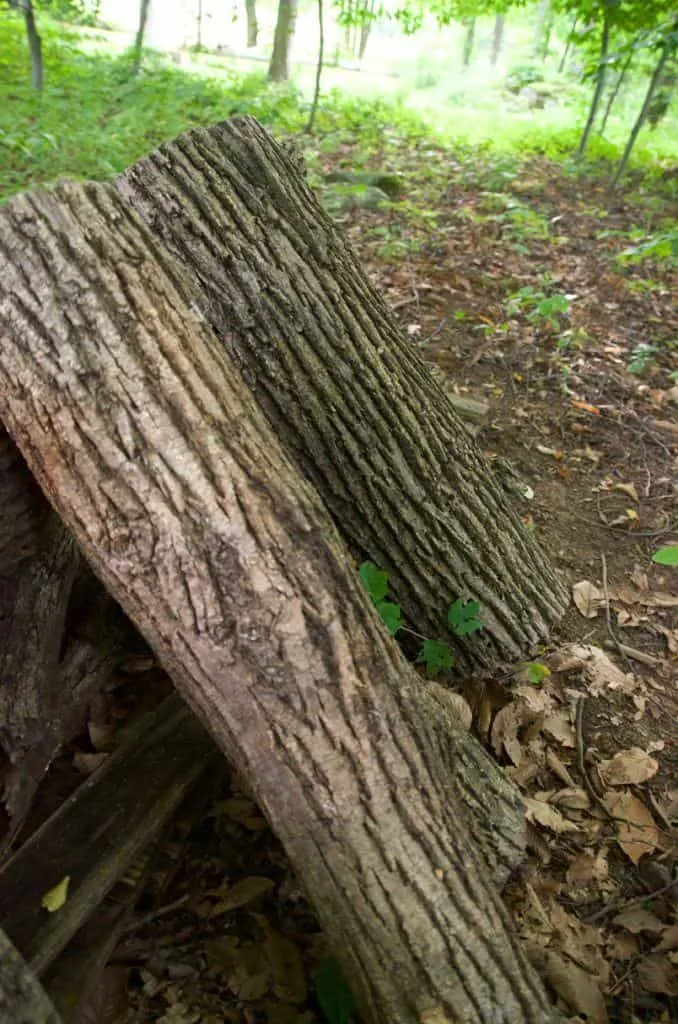
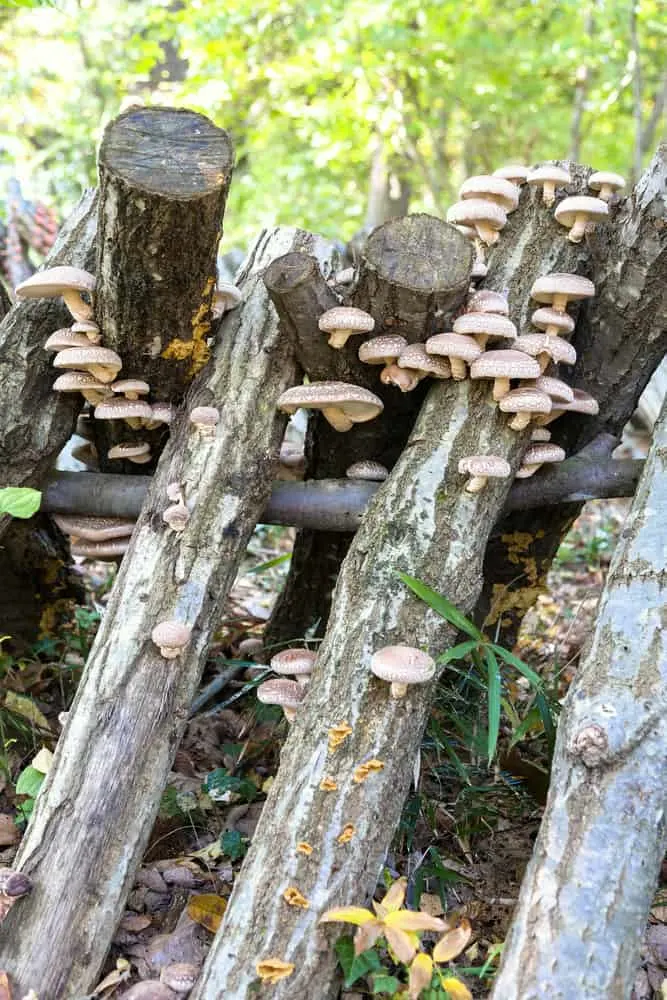
Step 6: Water and wait
It’s essential to keep the logs moist while you’re waiting for your mushrooms to grow. For the most part, the rain and/or snow will do this job for you. However, if your region goes through a dry spell, it would be a good idea to spray your logs with the hose.
Mushroom growing is a practice in patience, you shouldn’t expect to see any mushrooms for several months or maybe even several years depending on the species.
Be sure to read up on the best times to hunt for your species of mushrooms and check the logs often around that time.
While I await mushrooms to form from my log, here’s what you should expect to find:
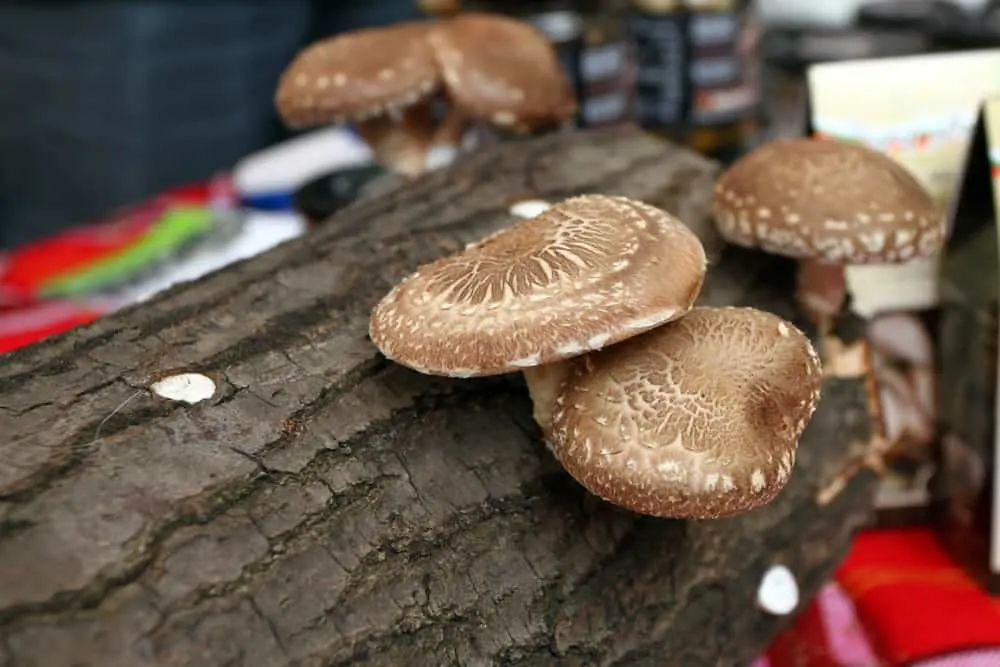
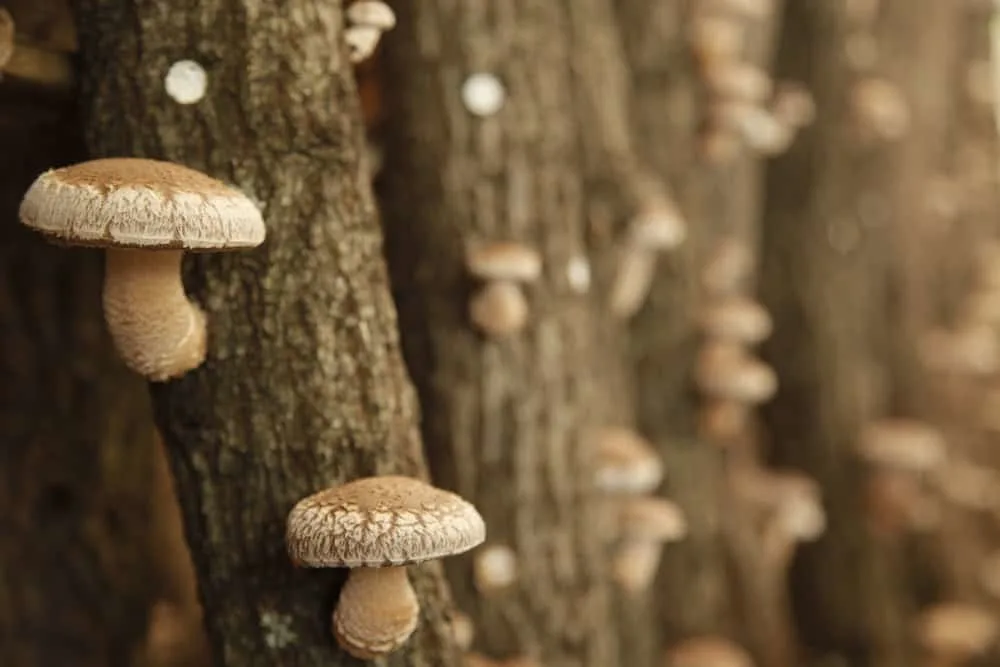
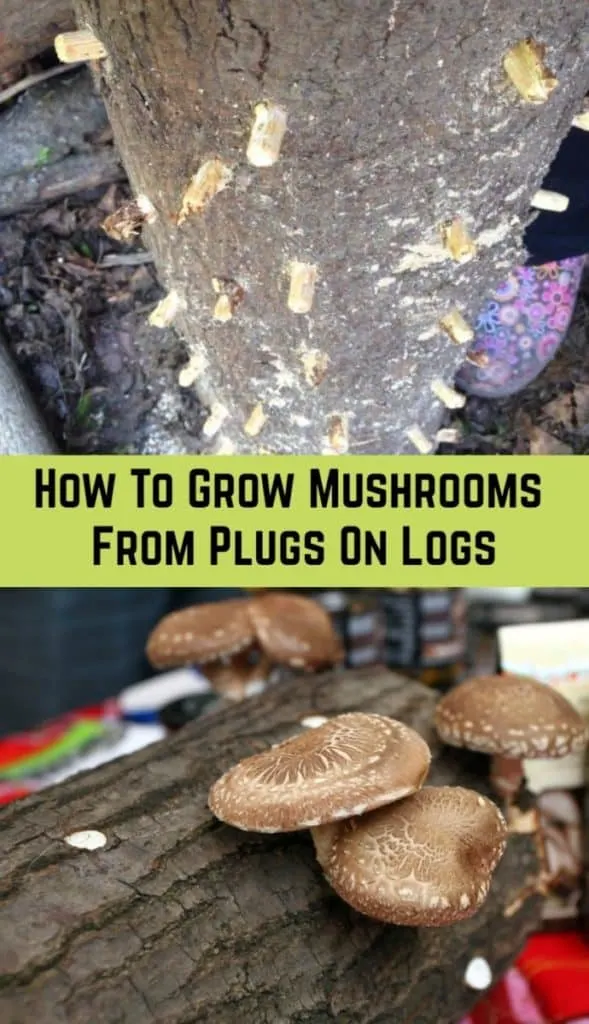

Get the famous Rural Sprout newsletter delivered to your inbox.
Including Sunday musings from our editor, Tracey, as well as “What’s Up Wednesday” our roundup of what’s in season and new article updates and alerts.


